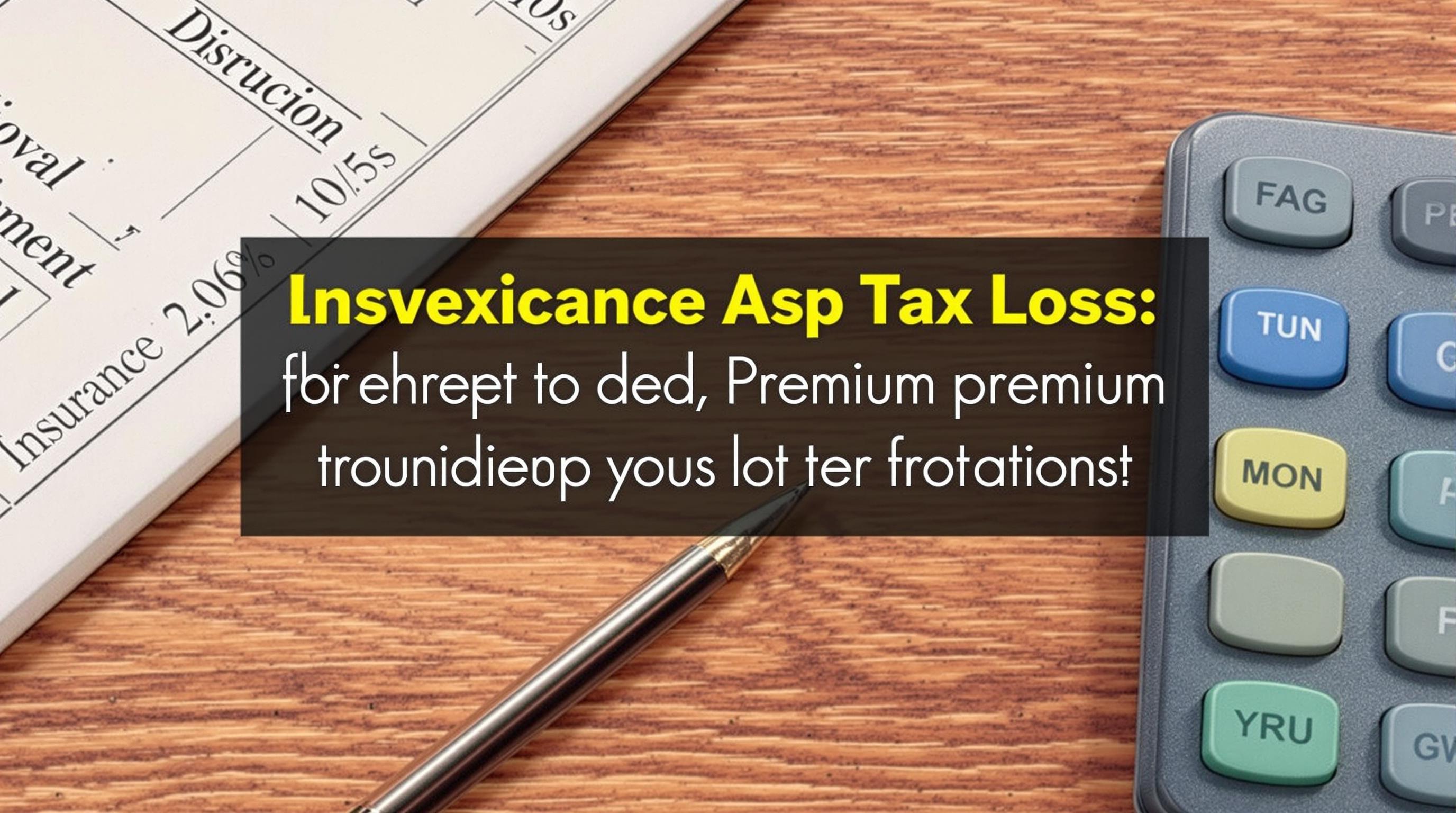Related Articles
- Top 7 Game-Changing Riders Released Since 2019 That Redefine How You Customize Your Life Insurance Coverage
- Top 5 Game-Changing Insurance Add-Ons from the Past Five Years Redefining Rider Benefits and Coverage
- The Silent Impact of Guaranteed Issue Insurance on Elderly Mental Health and Community Social Networks
- Top 6 Emerging Simplified Issue Policies Since 2019 That Redefine Risk and Flexibility for Modern Buyers
- How Changing Remittance Intervals Influence Insurer-Provider Partnerships in Healthcare Coordination
- How Seasonal Spending Cycles Secretly Shape Insurance Premium Timing and Consumer Choices
Top 6 Tax-Savvy Insurance Products Released Since 2019 That Outperform Traditional Policies
Top 6 Tax-Savvy Insurance Products Released Since 2019 That Outperform Traditional Policies
Since 2019, several innovative tax-advantaged insurance products have entered the market, delivering benefits that often surpass traditional policies. This article dives deep into the top six such products, exploring their unique features, tax perks, and why they’re making waves among savvy investors.
1. Indexed Universal Life Insurance (IUL) with Enhanced Tax Shielding
At age 54, with two decades of experience in financial advising, I've seen Indexed Universal Life policies evolve into powerful tax-savvy vehicles. Unlike traditional whole life insurance, modern IULs link cash value growth to stock market indexes but with downside protection, allowing policyholders to accumulate tax-deferred gains.
One case study involving a 45-year-old client demonstrated how enhanced IUL designs helped her accumulate over $250,000 in cash value within 10 years, with no annual income tax on the growth. These policies also allow for tax-free loans, effectively serving as a tax-free retirement income source.
2. Roth IRA-Linked Fixed Annuities
Imagine combining the tax-free growth of a Roth IRA with the safety of fixed annuities. That’s precisely what new Roth IRA-linked fixed annuities deliver.
The appeal lies in their dual benefit: growth inside the annuity is tax-deferred, and qualified withdrawals in retirement are tax-free. Between 2020 and 2023, the market for RILA (Registered Index-Linked Annuity) products boomed by 35%, according to LIMRA data, showing investor confidence in these tax-friendly options.
A Conversational Take on Surplus Value Whole Life Policies
Picture this: You’re chatting with a buddy, and he brags about his “cash cow” insurance policy that pays him dividends every year. Surplus value whole life policies, launched since 2019, have taken this classic concept and turbocharged it. Not only do they pay dividends, but they also come with robust tax benefits that keep more money in your pocket.
Many policyholders report dividend rates averaging 6%-7%, which is impressive. Plus, the dividends can be used to buy additional insurance or premium offsets — all still growing tax-deferred. One 38-year-old tech entrepreneur used surplus value policies to supplement his income tax-free after retirement. Pretty neat for a legacy product that’s now reinventing itself!
3. Health Savings Account (HSA)-Integrated Life Insurance Riders
In 2019, a few insurers began offering riders that integrate Health Savings Accounts with life insurance policies. This innovation is particularly beneficial for folks with high-deductible health plans since contributions to HSAs are tax-deductible, grow tax-free, and withdrawals for qualified medical expenses are likewise tax-free.
Coupling this with life insurance protections and investment components provides a triple tax advantage. For example, Tech giant Vanguard’s research indicates that HSA users who max out contributions save thousands in taxes annually, a trend echoed by these new integrated policies.
The Funny Side of Variable Universal Life (VUL) 2.0
If insurance products were superheroes, VUL 2.0 would be the quirky one who still saves the day but with a twist. The Variable Universal Life polices revamped after 2019 now come with smarter fund options and built-in tax advantages. It’s like your policy decided to hit the gym and turned from a “meh” product into a tax-savvy beast.
Sure, the investment risk means you might have to hold tight during market downturns, but the tax-deferred growth and the ability to access cash value tax-free make it attractive. A 2021 study by the American Council of Life Insurers found that newer VUL policies have a 15% higher cash value growth rate compared to traditional versions. So next time you hear “variable,” think “valuable.”
4. Annuity Contracts with Qualified Longevity Annuity Contract (QLAC) Features
QLACs gained momentum post-2019 as a smart way to defer required minimum distributions (RMDs) from retirement accounts while securing guaranteed lifelong income. Unlike standard fixed annuities, QLACs allow individuals to shift a portion of their IRA or 401(k) funds into an annuity that starts payouts late in life, often after age 80, thus optimizing tax impact.
The IRS permits up to $145,000 (indexed annually) to be placed into QLACs, shielding these funds from RMDs and deferring income taxes. According to a 2022 report from the National Retirement Planning Coalition, retirees using QLACs reduced their lifetime taxable income by an average of 18%, improving overall tax efficiency substantially.
Summing Up With a Story
Let me tell you about Jane, a 67-year-old retired teacher who felt overwhelmed by all the insurance jargon. After consulting her advisor, she switched from a traditional whole life plan to an Indexed Universal Life policy with an HSA rider and a QLAC annuity.
Within 5 years, Jane enjoyed a $50,000 tax-free loan from her IUL, paid no taxes on her HSA withdrawals for medical expenses, and started drawing from her QLAC at 82, all while lowering her yearly tax bills by 20%. Jane’s case illustrates how these modern policies don’t just outperform old-school insurance; they change retirees' financial lives.
5. Life Insurance with Chronic Illness Accelerated Death Benefits
The tax code has long favored accelerated death benefits, but new life insurance products since 2019 have cleverly bundled chronic and critical illness riders. These riders allow policyholders to access part of their death benefits tax-free when diagnosed with qualifying illnesses.
A Harvard Public Health study in 2021 indicated that approximately 60% of adult Americans will face chronic illness by age 65, making these riders not just practical but potentially financially life-saving. This product is an excellent example of combining insurance protection with an effective tax strategy and a real-life financial safety net.
6. ESG-Focused Life Insurance Policies
As Environmental, Social, and Governance (ESG) investing has soared—up 42% in assets since 2019 according to Morningstar—insurance carriers have reacted, creating ESG-oriented life insurance products. These policies invest premiums in socially responsible portfolios without compromising tax benefits.
One broker recently shared that clients aged 30-45 are increasingly attracted to ESG life policies because they blend ethical investing with tax-advantaged growth, often outperforming traditional policies on both fronts. Although still emerging, these products represent the future of tax-savvy insurance with a conscience.
All told, the landscape of insurance has shifted remarkably in recent years. Tax efficiency now reigns supreme, and savvy investors benefit from products that combine growth, protection, and tax advantages.




